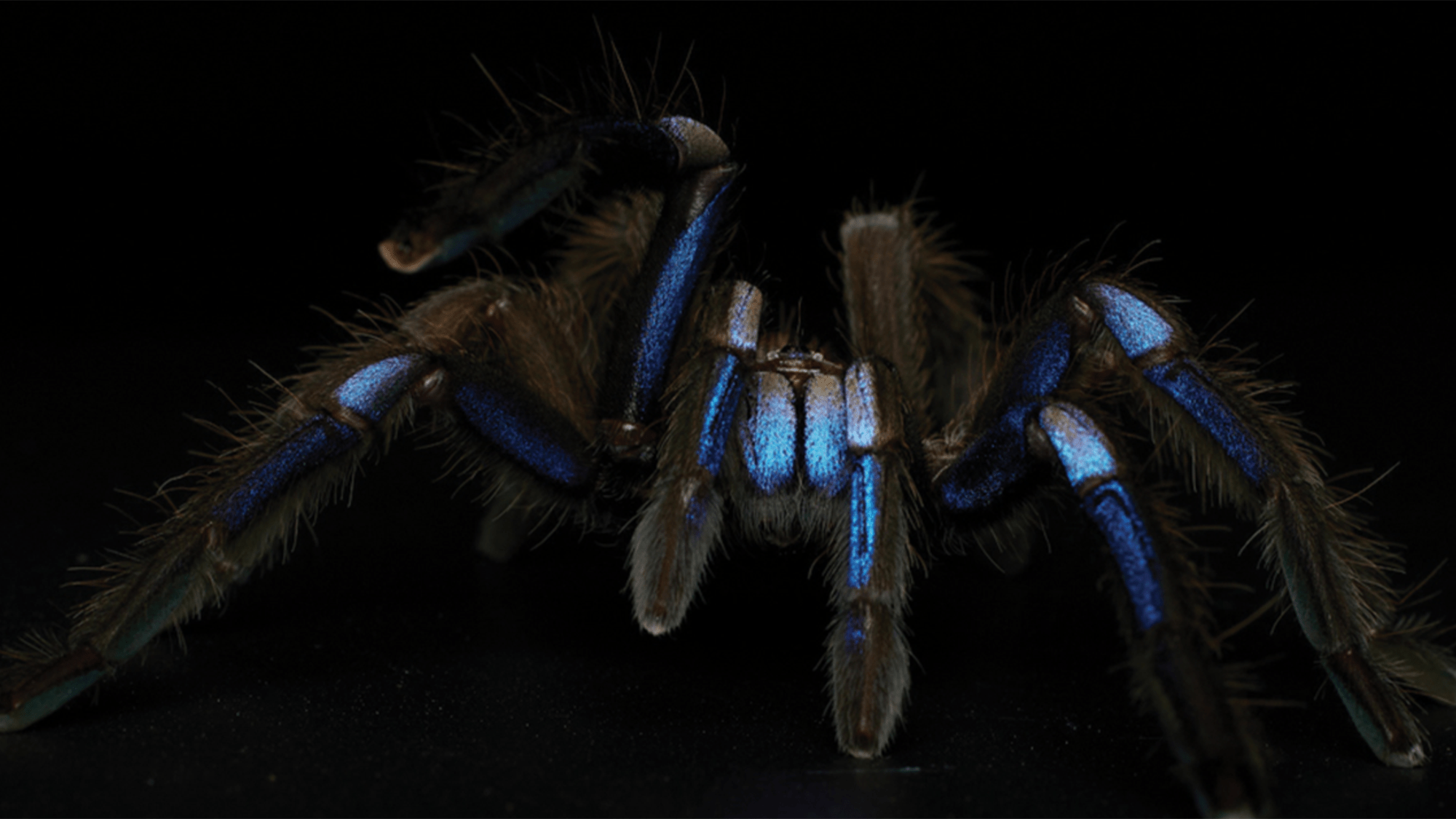

Scientists in Thailand have discovered a new species of tarantula with a very unique blue hue. The tarantula is named Chilobrachys natanicharum and is also called the electric blue tarantula. The findings were described in a study published September 18 in the journal ZooKeys
[Related: Before spider mites mate, one of them gets their skin removed.]
The new colorful arachnid was discovered in southern Thailand’s Phang-Nga province. It follows the identification of another new species of tarantula called Taksinus bambus, or the bamboo culm tarantula.
“In 2022, the bamboo culm tarantula was discovered, marking the first known instance of a tarantula species living inside bamboo stalks,” study co-author and Khon Kaen University entomologist Narin Chomphuphuang said in a statement. “Thanks to this discovery, we were inspired to rejoin the team for a fantastic expedition, during which we encountered a captivating new species of electric blue tarantula.”
The team that found the first not-so-blue bamboo culm tarantula included a local wildlife YouTuber named JoCho Sippawat. This year, Chomphuphuang joined up with Sippawat for a surveying expedition in the province to learn more about tarantula diversity and distribution. They identified this new species by this very distinctive coloration during the expedition.
“The first specimen we found was on a tree in the mangrove forest. These tarantulas inhabit hollow trees, and the difficulty of catching an electric-blue tarantula lies in the need to climb a tree and lure it out of a complex of hollows amid humid and slippery conditions,” Narin said. “During our expedition, we walked in the evening and at night during low tide, managing to collect only two of them.”

The color blue is very rare in nature. It can even exist in other animals that aren’t usually this color, including the blue lobsters that have recently been found in Massachusetts and France. Some animals also evolved wild colors including blues, yellows, and reds to appear poisonous to try and keep other animals from eating them.
In order for an organism to appear blue, it must absorb very small amounts of energy while reflecting high-energy blue light. Since penetrating molecules that are capable of absorbing this energy is a complex process, the color blue is less common than other colors in the natural world.
According to the study, the secret behind the electric blue tarantula’s wild color comes from the unique structure of their hair and not from a presence of blue pigment. Their hair incorporates nanostructures that manipulate the light shining on it to create the blue appearance. Their hair can also display a more violet hue depending on the light, which creates an iridescent effect.
[Related: Blue-throated macaws are making a slow, but hopeful, comeback.]
This species was previously found on the commercial tarantula market, but there hadn’t been any documentation describing its natural habitat or unique features.
“The electric blue tarantula demonstrates remarkable adaptability. These tarantulas can thrive in arboreal as well as terrestrial burrows in evergreen forests,” Narin said. “However, when it comes to mangrove forests, their habitat is restricted to residing inside tree hollows due to the influence of tides.”
To name the new species, the authors conducted an auction campaign and the scientific name of Chilobrachys natanicharum was selected. It is named after executives Natakorn and Nichada Changrew of Nichada Properties Co., Ltd., Thailand and the proceeds of the auction were donated to support the education of Indigenous Lahu children in Thailand and for cancer patients in need of money for treatment.

The authors say that this discovery points to the continued importance of taxonomy as a basic aspect of research and conservation. It also highlights the need to protect mangrove forests from continued deforestation, as the electric blue tarantula is also one of the world’s rarest tarantulas.
“This raises a critical question: Are we unintentionally contributing to the destruction of their natural habitats, pushing these unique creatures out of their homes?” the researchers ask in their conclusion.